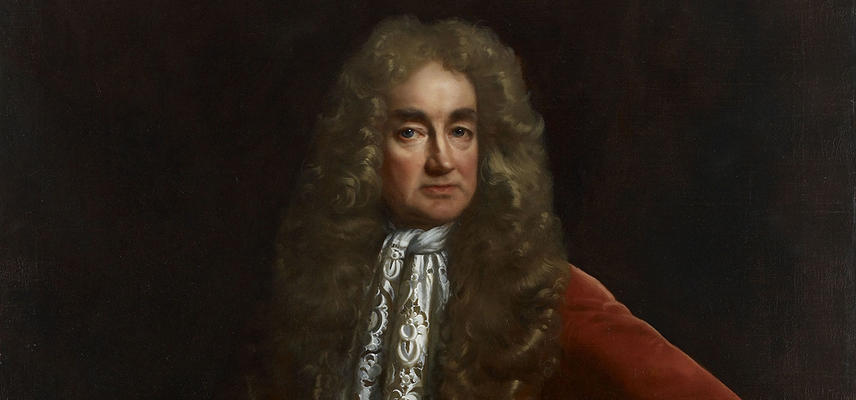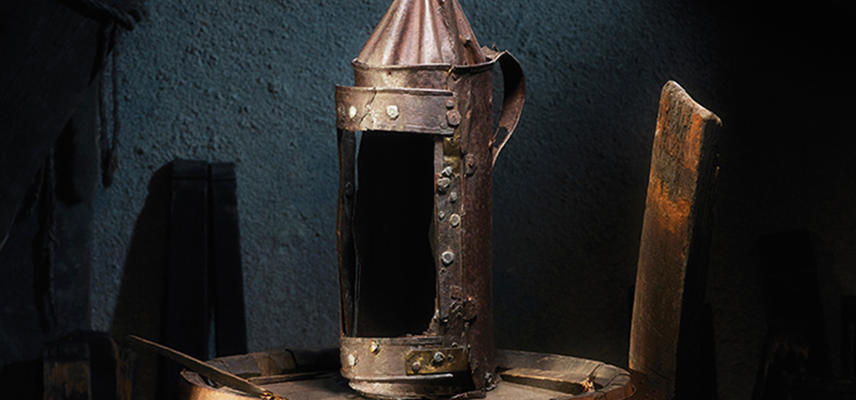ASHMOLEAN STORY GALLERY
'I Elias Ashmole, out of my affection to this sort of Learning…have amass’d together great variety of naturall Concrets & Bodies, & bestowed them on the University of Oxford’
Elias Ashmole, ‘Statues Order & Rules, for the Ashmolean Museum’, 1686
The Ashmolean Museum was named after its founder Elias Ashmole (1617–1692) and opened in 1683. It is widely recognised as being the first modern museum.
In the Ashmolean Story Gallery you can discover more about Elias Ashmole and his original museum, as you get close to curious and intriguing objects from his collections, which included the Tradescant family’s ‘Rarities’.
There are many treasured highlights in the gallery including Powhatan's Mantle – the gallery's large central table display – Guy Fawke's lantern and Elias Ashmole's striking portrait to name but a few. You'll even find a 17th-century crystal ball.
About Elias Ashmole and his vision
Elias Ashmole was a royalist, lawyer, antiquarian, scholar, and collector who gave his collections to the University of Oxford in 1677. A condition of his gift was that an institution dedicated to the advancement of knowledge should be built to house the collections. The original Ashmolean Museum was constructed near the Bodleian Library and was a model scientific institution for the time.
Elias Ashmole’s vision was for his museum to be a centre of practical research and learning based on the collections, with the aim of advancing knowledge of the natural world. Research on the collections is still one of the major activities in the Museum.
GALLERY HIGHLIGHTS
Powhatan's Mantle (detail)
Portrait of Elias Ashmole (detail)
Guy Fawke's Lantern
Crystal ball and stand
The Tradescant Collection and Elias Ashmole
The Tradescant family displayed their famous collection of natural and artificial rarities at their home in Lambeth, south London initially. Unusually for the time, the curious could pay a fee to inspect the collection and in 1634 a visitor described it as a place ‘where a Man might in one daye behold and collecte into one place more curiosities than hee should see if hee spent all his life in Travell’.
John Tradescant the younger was helped by Elias Ashmole to produce a catalogue of the collection in 1656. Tradescant gifted the collection to Ashmole, who later presented it to University of Oxford along with his own collection to form the Ashmolean Museum. Objects may have been displayed at the early Ashmolean in a similar arrangement to the Tradescant catalogue.
GALLERY SUPPORTERS
One of the most significant pieces that was displayed when the Story gallery launched was Powhatan’s Mantle following the Ashmolean’s 2017 annual appeal which asked members of the public to support a new high-tech display case for this significant object. Donors to the appeal were offered the chance to have their name or a dedication inscribed on the case and more than 200 people made donations.
In addition to the public appeal in 2017, the Story gallery was made possible by a generous donation from Mr Stephen Stow, Fellow of the Ashmolean; a major grant from the Linbury Trust; and a grant from the DCMS/Wolfson Galleries and Improvements Fund.
Find out more in the original Launch of the Story Gallery Press Release from 2017









